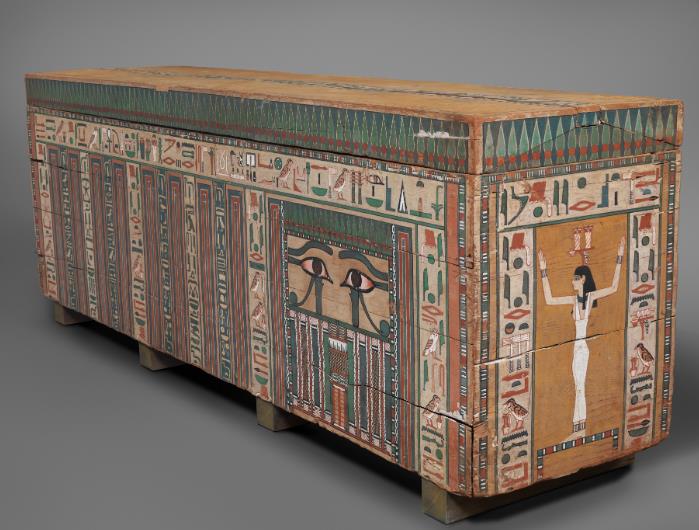In a fascinating blend of ancient history and modern pop culture, archaeologists have uncovered a 3,000-year-old Egyptian sarcophagus featuring an image that bears a striking resemblance to Marge Simpson from the iconic animated series “The Simpsons.” The discovery, made in Minya, Egypt, has sparked widespread curiosity and amusement. The sarcophagus, belonging to Tadi Ist, the daughter of a high priest, features a depiction of a woman with blue hair styled in a tall, rectangular shape, yellow skin, and a green dress, reminiscent of Marge Simpson’s signature look. This unexpected find has led to a flurry of discussions and speculations about the connections between ancient Egyptian art and contemporary culture.

The Discovery of the Marge Simpson Sarcophagus
The sarcophagus was unearthed in early 2023 in an ancient cemetery in Minya, a city on the western bank of the Nile. The cemetery, dating back to the 20th Dynasty of Egypt’s New Kingdom Period, was the final resting place for high-ranking officials and priests. Among the numerous artifacts discovered, the sarcophagus of Tadi Ist stood out due to the peculiar depiction on its inner lid. The image, which closely resembles Marge Simpson, has captivated both archaeologists and the public alike.
The depiction shows a woman with a tall blue coif, yellow skin, and a green dress, surrounded by twelve smaller images representing the twelve hours of the day. This artistic representation is not only a testament to the craftsmanship of ancient Egyptian artists but also a curious coincidence that has drawn parallels to a beloved modern-day character. The discovery has been described as both amusing and significant, highlighting the timeless nature of certain artistic expressions.
The Significance of the Depiction
While the resemblance to Marge Simpson is striking, the depiction on the sarcophagus holds deeper historical and cultural significance. Tadi Ist, the woman depicted, was the daughter of a high priest in El-Ashmunein, a town located near Minya. The sarcophagus and its artwork provide valuable insights into the religious and social practices of ancient Egypt. The twelve smaller images surrounding the main depiction are believed to represent the twelve hours of the day, a common motif in Egyptian funerary art symbolizing the journey of the soul through the afterlife.
The discovery has also sparked discussions about the influence of ancient Egyptian art on modern culture. While it is unlikely that the creators of “The Simpsons” were directly inspired by this ancient depiction, the similarities highlight the enduring nature of certain visual motifs. The tall, rectangular hairstyle and vibrant colors used in the depiction are reminiscent of the bold and distinctive style that has made Marge Simpson an iconic character.
Public Reaction and Cultural Impact
The revelation of the Marge Simpson-like depiction has generated significant interest and amusement on social media platforms. Users have shared images of the sarcophagus, drawing humorous comparisons between the ancient artwork and the animated character. This unexpected connection between ancient history and contemporary pop culture has provided a unique opportunity for people to engage with archaeological discoveries in a lighthearted and accessible manner.
The discovery has also underscored the importance of preserving and studying ancient artifacts. Each new find adds to our understanding of past civilizations and their cultural practices. The Marge Simpson sarcophagus serves as a reminder of the rich and diverse heritage of ancient Egypt, as well as the surprising ways in which history can intersect with modern life. As archaeologists continue to explore and uncover the secrets of the past, such discoveries will undoubtedly continue to captivate and inspire.
